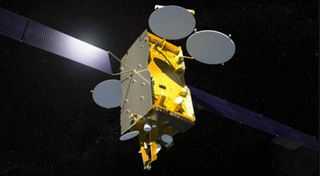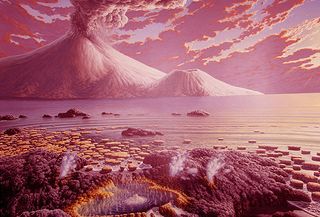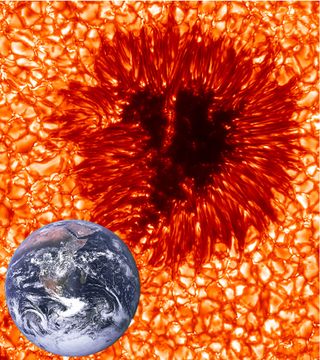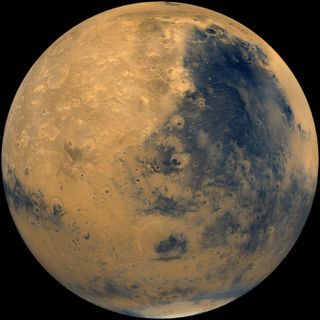Vote Now! Best Space Stories of the Week - Aug. 21, 2011
Vegans on Mars, The Baby Moon and a Lost Satellite

This week we explored the possibility of vegans living on Mars, questioned the age of the moon and tracked a huge sun storm.Vote for your top space story of the week:
NASA Robot Landers Test Future Space Exploration Tech

A look at two different NASA projects to develop robotic lunar landers: the Robotic Lander Development Project at Marshall Space Flight Center and Project Morpheus at the Johnson Space Center.[Full Story]
Comet Elenin Poses No Threat to Earth, NASA Says

The comet Elenin is passing through the inner solar system right now and will make its closest approach to Earth on Oct. 16. But despite hype and speculation, comet Elenin poses no threat to Earth, NASA says.[Full Story]
Will We Be Able to Deflect an Earthbound Asteroid?

A 6-mile-wide asteroid that struck off the coast of present-day Mexico 65 million years ago induced ecological changes that wiped out the dinosaurs. Inevitably, an Earth-shaking chunk of space debris will strike again.[Full Story]
Moon May Be Younger Than You Think, Evidence Suggests

The moon may actually be millions of years younger than previously thought, a new study reveals.[Full Story]
Can Life Evolve From a Different Chemical Code?

All life on Earth relies on a standard set of 20 molecules called amino acids to build the proteins that carry out life's essential actions. But did it have to be this way? [Full Story]
Sunspot-Spotting Method May Improve Solar Storm Warning

Researchers say they can now detect sunspots, or the strong magnetic fields that emerge from the Sun’s interior and erupt onto its surface, a full day or two before they appear, posing a potential boon for space weather prediction. [Full Story]
NASA Video Shows Huge Sun Storm Grow to Engulf Earth

For the first time, scientists have watched the evolution of a huge solar storm, from its origin on the sun until its collision with Earth 93 million miles later. [Full Story]
Synthetic Life Could Help Colonize Mars, Biologist Says

Synthetic lifeforms engineered to use carbon dioxide as a raw material could help humans settle Mars one day, Craig Venter says. [Full Story]
Vegans on Mars? PETA Says Yes, Please

Vegans on Mars? PETA says yes, advocating for an animal-cruelty-free outpost someday on the Red Planet. [Full Story]
Lost Russian Communications Satellite Found in Wrong Orbit

A $300 million Russian telecommunications satellite launched Aug. 18 disappeared from the view of ground controllers and the U.S. space surveillance network along with the rocket upper stage that carried it into orbit, according to industry officials and the Russian space agency, Roscosmos. But by mid-day Eastern Daylight Time Aug. 19, the U.S. Space Surveillance Network had located the Express-AM4 satellite. [Full Story]
Join our Space Forums to keep talking space on the latest missions, night sky and more! And if you have a news tip, correction or comment, let us know at: community@space.com.
Get the Space.com Newsletter
Breaking space news, the latest updates on rocket launches, skywatching events and more!

Space.com is the premier source of space exploration, innovation and astronomy news, chronicling (and celebrating) humanity's ongoing expansion across the final frontier. Originally founded in 1999, Space.com is, and always has been, the passion of writers and editors who are space fans and also trained journalists. Our current news team consists of Editor-in-Chief Tariq Malik; Editor Hanneke Weitering, Senior Space Writer Mike Wall; Senior Writer Meghan Bartels; Senior Writer Chelsea Gohd, Senior Writer Tereza Pultarova and Staff Writer Alexander Cox, focusing on e-commerce. Senior Producer Steve Spaleta oversees our space videos, with Diana Whitcroft as our Social Media Editor.
